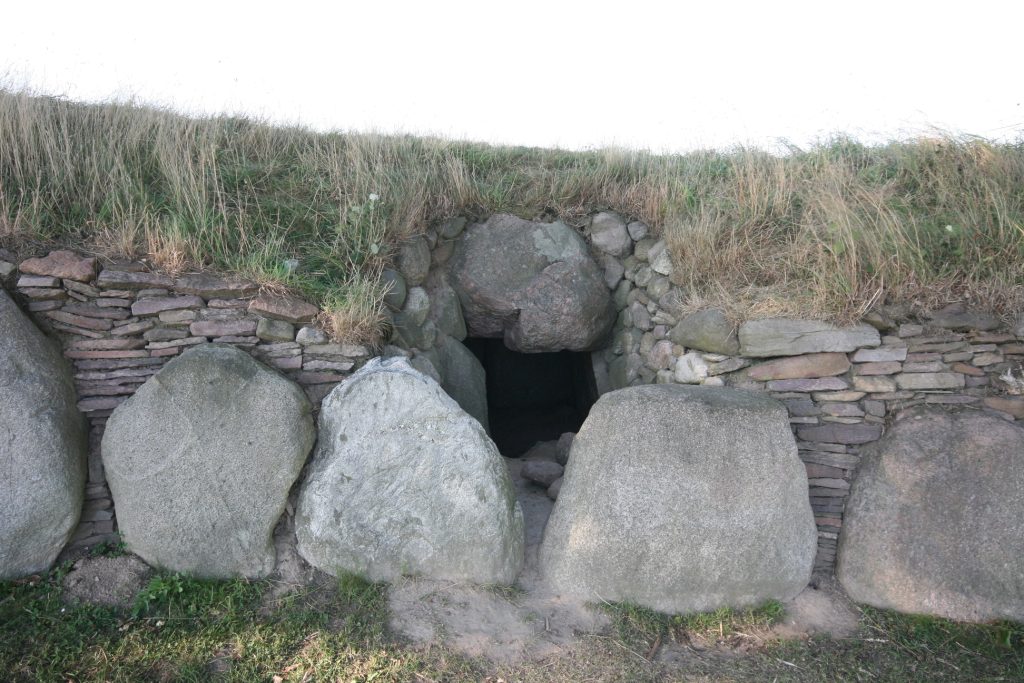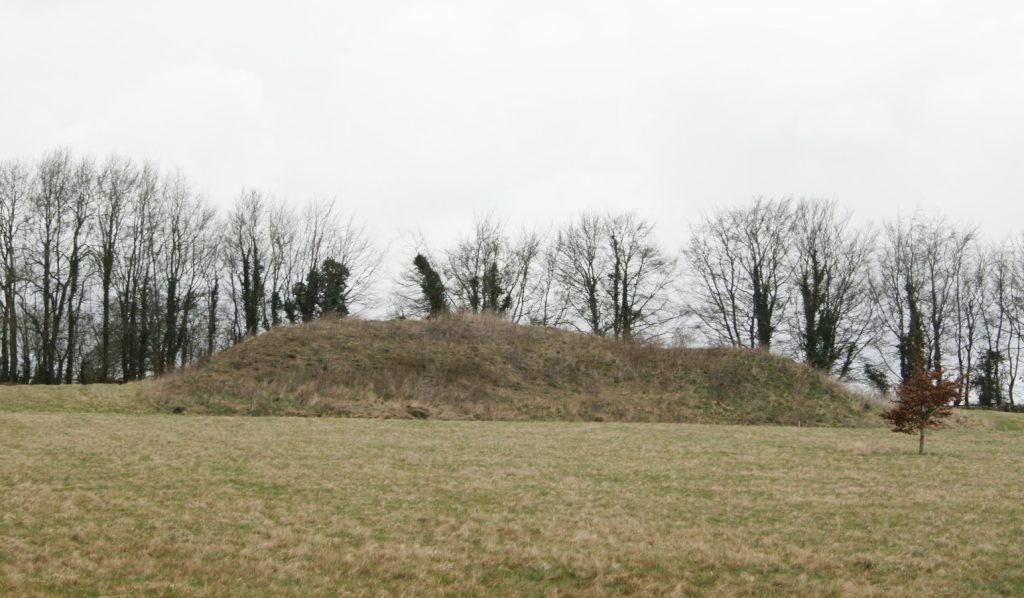Burial monuments of the Funnel beaker culture (FBC) or Trichterbecherkultur (TRB)
Archaeologists have named the Neolithic communities funnel beaker culture after the characteristic type of beaker pottery created by that people. The top of the beakers is formed like a funnel.

The so called Funnel beaker culture, short TRB from (German) Trichterbecherkultur (ca 4000 BC–2700 BC) covered big parts of the North of Europe. The TRB is further sub-divided into groups and stretches from parts of the Netherlands in the West, over Northern Germany to Poland in the East. In the North it is covering Denmark and the South of Sweden.
Many different forms of burials took place during TRB [1]. During the Mesolithic burials took mainly place in flat graves with the corpse in elongated position on the back. In TRB single graves were initially continued, but the graves were enriched with wooden frames or stone packages. Generally many varied forms of burials existed, some in parallel.
First burial monuments to appear in TRB were non-megalithic long barrows. These were built 3800 to 3400 BC in Northern middle Europe and South Scandinavia, but also in Britain. The structures were often rebuilt a number of times and were usually oriented East-West. The East side was used for complex ritual practises. Remains of votive objects were found as well a traces of fire. As part of the rebuilding practice some of the barrows were enclosed with wooden fences or stones.
There seems to be a path from non-megalithic long barrows to megalithic monuments, as some contained burial cists or dolmen structures. From about 3650 BC megalithic monuments dominated the ritual landscape of TRB. However, many burial forms seem to continue in coexistence and with regional variations, i.e. single burials continued as well as wooden structures.
Megalithic TRB burial monuments: Dolmen and passage tombs
About 5000 megalithic monuments survived in Northern Germany and South-Scandinavia, but the this presents only a small fraction of the original number. Estimates are that this present only about 1% of the original number, that would mean that once around 500,000 megalithic monuments existed in Northern Germany and South-Scandinavia.
Recent analysis based on carbon-dating suggests a regional variation of different types and also some forms where used in parallel and some long barrows were extended by a dolmen. In Borgstedt (Holstein, Germany) for example a megalithic dolmen in a round enclosure was found next to a long barrow.
This side-by-side is questioning earlier theories of a clear sequence from closed dolmen to extended, great dolmen and passage tombs, as suggested by researchers like Sprockhoff. Instead some of these forms were built in some regions and not in others. Müller [1] suggest to distinguish dolmen in their different forms from passage tombs.

The megalithic tombs were built into or are enclosed by mounds of different shapes. We know the elongated long mounts, trapezoid mounts and round or oval mounts.
Megalithic long mounds
The megalithic long mounds of the TRB were very common and some might be, as said before updated from un-chambered long barrows.
The ‘Visbeker Bräutigam’ is a long mound enclosed by 170 stones about 104 m long and between 8 to 9 m wide in exact East-West orientation. The bolders at the East side are about 2.4 m tall. Another nearby monument is called ‘Visbeker Braut’ and it is 80 m long and 7m wide, the front bolders of the North-east are more than 2 m tall.


Passage tombs





“Waldhusen” is the name of a passage grave of the type “Holstein chamber” located near the village Pöppendorf / Lübeck, Germany with oval/circular enclosure. The monument was excavated 1843 by K. Klug. Originally the grave had a mound of more than 4 m height and a diameter of 17m. The chamber is oriented WNW to ESE and covered by three capstones. The middle one has an estimated weight of 8-10 t. The size of the chamber is 4 m long, 1.7m wide and 1.5 m high. The passage is 2 m long and 50 cm wide.

The holes between the stones of the chamber were carefully filled by a mixture of clay and shattered flint stones. At the north side an approximately 30 cm wide window was found that was closed with a stone plate from inside. A 30-40 cm high layer of burnt wood was found on the ground, but no bones. The inside of the stones showed traces of fire. Three ceramic pots were found inside the chamber.
In the borrow surrounding the chamber several remains of burials were found probably from the Bronze Age.
The passage tomb ‘Idstedter Räuberhöhle’ is still in in its original mound.


References
[Bibtex]
@Book{Mueller2017,
title = {Gro{\ss}steingr{\"a}ber, Grabenwerke, Langh{\"u}gel: Fr{\"u}he Monumentalbauten Mitteleuropas},
publisher = {Theiss, Konrad},
year = {2017},
author = {M{\"u}ller, J.},
isbn = {9783806234633},
url = {https://books.google.de/books?id=9GxvvgAACAAJ},
}